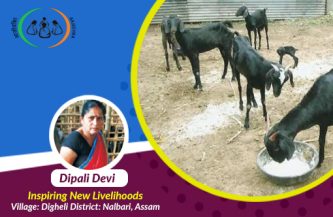Case Study: MyGov enabling participative decision making – Budget 2015

Noted social activist Michael Moore was at his pithiest best while summing up the essence of democracy: “Democracy is not a spectator sport, it’s a participatory event. If we don’t participate in it, it ceases to be a democracy.”
While commentators have, over the centuries, debated the multiple benefits of democracy over other forms of governance, it is its participatory nature that has almost unanimously been recognised as the most outstanding feature. Democracy, in its normative form, while electing a leader through a transparent process, expects that leadership to make decision making a participative process where citizens have an important pro-active voice in policy making. But what is it about participative leadership that makes it so attractive?
First, involvement in decision-making improves the understanding of the issues involved by those who must carry out the decisions. This means the actual effect of the policy is factored in at the stage of policy making itself thereby insulating it from remaining a mere academic exercise. Second, people are more committed to the actions flowing from the policy where they have been involved in the relevant decision-making. The citizens, who will actually be affected by the policy, have become a stake holder in the policy so framed rather than it being handed top down, and thus have more stakes in making the policy work. Third, people are less competitive and more collaborative when they are working on joint goals. Fourth, when people make decisions together, the social commitment to one another is greater and thus increases their commitment to the decision.
Mahatma Gandhi, one of the greatest personalities of twentieth century, was among the first to understand the power of such participative decision making process to mobilize public opinion and this is what contributed to his enormous achievement of converting the freedom movement into a mass movement. Prime Minister Narendra Modi, inspired by the great Mahatma, has often spoken of learning from this great heritage and deploying it in modern context of converting the development and governance paradigm into a mass movement.
It is with this ambition that MyGov was launched by the Prime Minister on 26th July 2014 as a citizen online engagement platform. The avowed aim of the platform was to achieve the following purposes: A) Pro-active citizen participation in policy making; B) Citizen participation in governance tasks; and C) Volunteer participation to achieve synergy in the ideas and discussions in online world with action on the ground.
One of the conscious decisions taken during the conception stage of MyGov platform was to have no activity on MyGov without a buy-in by a relevant department or ministry of the government of India. This was done to ensure that all discussions and tasks on MyGov would have a defined closure point and therefore the valuable time that citizens spend on MyGov would be tied up with a clearly defined proposed action of the government. This way, MyGov would become a useful platform for citizens, retaining the flavour of a free flowing online general discussion forum, while avoiding the trap of only remaining a discussion forum.
This conceptual clarity at the level of the head of government, with a clearly defined mandate to ministries and departments to factor-in the citizen suggestions in discussions and tasks they have initiated on MyGov, in the eventual policy, program or schemes they frame, has resulted in much success for MyGov since its launch. The names of the very popular Pradhan Mantri Jan-Dhan Yojana and the now ubiquitous logo for the Swachh Bharat Abhiyan were generated by contributors on MyGov. The Prime Minister himself has used the MyGov platform to regularly source citizens’ ideas and aspirations for his very popular, monthly “Mann ki Baat” dialogue with citizens.
The confidence generated by these early successes encouraged both ministries and the citizens to engage in crowd sourcing for even broader participation. The Ministry of Railways and the Ministry of Finance, thus initiated discussions seeking ideas from citizens for consideration for the Railway Budget and the General Budget respectively. In what was clearly a first, crowd sourced ideas from citizens, generated on MyGov, became actual government proposals in the respective budgets for the year 2015-16. The implications of a direct platform for citizens, where they could articulate their aspirations and needs to the government, without any intermediary or middlemen, can be seen in some of the far reaching ideas that became actual budget proposals.
For the Railway Budget, suggestions that have been incorporated in the actual proposals include proposals to fit bio-toilets and vacuum toilets in rail coaches to improve cleanliness; providing concessional e-tickets to differently-abled passengers; provision to order food online at the time of booking of tickets through IRCTC; integrating popular private food chains with the pantry network of railways; installation of digital display networks on platforms to provide real time information to citizens and the involvement of ISRO for providing audio-visual warnings to passengers at unmanned level crossings by using geo-spatial technology. A more detailed description of MyGov user suggestions reflected as actual proposals can be read here.
In the General Budget for 2015-16, some of the innovative proposals that have been incorporated include the proposal to enable monetization of gold and launching of sovereign gold bonds; proposal to abolish wealth tax and simplify tax structures; special tax incentive for promotion of Yoga; proposal to make sharing of PAN number mandatory for cash transactions above a specified value; 100% tax benefit for contributions to Swachh Bharat fund; utilization of vast postal network for improving access to banking in remotest corners of India and the proposal to introduce a law to penalize non disclosure of foreign bank accounts and to tackle benami property holdings in India. A more detailed description of MyGov user suggestions reflected as actual proposals can be read here.
These suggestions were thought of by the citizens themselves. They are aspirational in nature in some cases and practical in others. A gold monetization scheme can have transformational affect on the economy. Integrating of popular food chains with rail pantry network and simultaneously enabling the citizens to order food online would, while appearing as simple suggestions, enormously change the passenger experience for those who are travelling by rail network.
The implications of such participative decision making process are enormous. Development as a paradigm of general national discourse is a rather abstruse concept. However, if the broad long term governance framework can be converted into an easily identifiable specific time bound programs, with which the citizen can identify themselves in the immediate term, then it is easier to weave it into the national fabric. The General budget each year is an important policy document of the government, detailing the framework by which the government intends to manage the economy in the medium to long term. However, what is in it for me in the next budget is the most pertinent question by citizens in the build up to each year’s budget. The art of socially and emotionally investing the people in the governance paradigm is to somehow interlink these two strains. With MyGov platform acting a bridge, the citizen now has not to wait till the end of budget process to find out what is in it for them but can pro-actively help in deciding what do they want from the budget. One simple exercise of participative decision making and the budget becomes not a government’s document alone but a document of the people. The emotional commitment gets built-in and the abstruse development paradigm is on its way to becoming a participative mass movement. The platform that is enabling this is the MyGov platform, translating the vision of Prime Minister Narendra Modi into a reality.
Total Comments - 103
Leave a Reply
You must be logged in to post a comment.





 Login
Login
Press to cross traffic pedestrian signals at selected locations which will allow crossing of pedestrian and then automatically turn green so that vehicular traffic is started and will run for vehicular traffic for at least programmed period and then whenever pushed by any pedestrian then after minimum traffic period will turn red for vehicles. Many times traffic signal is red when there is no traffic in Singapore at some places I saw this system when I pressed the button the countdown began and
Sir at the back and front of all motored and non motored vehicles a Red colour Reflactory tapes of different size for vehicle will make the distinctions between the type of vehicle ahead in front specially in dark roads. To begin small red circle for all cycles and cycle rikshaw, medium circle for bullock cart and other non motor carts , bikes 4 inch, Three wheeler 12 inches , cars 24 inched, LCV 30 inches, MCV 42 inches , HCV 48 inches etc etc . This needs discussion and safety assessment
1) PUC certificate requirement by a vehicle which less than three year old should not be required as Police all over the India is making money on this excuse. Whereas PUC van will simply not check the pollution from the exhaust gases but will simply fill the certificate and give on payment of the charges. When there used to be leaded petrol and engines were also of poor technology and also very old non maintained vehicles then this requirement of PUC was OK But Not Now. Sir it needs review
Hi sir,
There are many temples across India. India is also known for this. It is our heritage nd v have the responsibility of safeguarding them. Many pilgrims coming to temples face the problems of unclean toilets and many even pee in the road sides which causes various diseases. So you can make arrangements for clean and hygienic toilets in places like this. Not only in temples but also in monuments and other public places. This will help millions in the country.
How to increase govt income? That is how to decrease govt. expenditure. Govt is giving HRA(house rent allowance) to that person also who has a house in his name and submitted the document to get exemption in income Tax. HRA should be given only to those persons who stay in a rented house i.e. who does’n have any house in their name. a huge amount of money can be saved in this process.
If an option to pay the bill online directly from the postal savings account is available, it will give lot of opportunities to grow the business to rural areas and remote areas where faces lack of financial materials like banks and debit/credit cards. similar to payment gateway like PAYPAL, indian post also can charge a small percentage towards the transactions. If this suggestion is practically implemented, it will give high potential for growth of the aspiring startup entrepreneurs like me.
PM sir,
In my life except my parents I don’t have trust on anyone but after seeing your efforts I can blindly trust on you and for that matter regularly fighting with your critics in my circle .Only request is don’t listen at this juncture to anyone listen to your heart otherwise you will get disturbed. no step is good or bad unless it is taken in positive spirit. Innovations starts from new steps not repeated one.Have faith in bhagwaan and continue doing good every good citizens are with you.
1.) Indian currency notes are printed on paper supplied by a western country
2.) Pakistan also getting the same paper for their currency
3.) Indian Police have reported that Pakistan is printing counterfeit of Indian currency and it is extremely difficult to recognize them.
4.) Our Government must do something about it, either bombing the Pakistani printing press by selective targeting by areal bombing or Changing our paper so that it is different from what Pakistan gets.
Industries and corporates must drive to achieve 100% recycling of their products and provide waste management facilities for public and governing bodies under CSR provisions.
Sir what we see in Rajasthan today isn’t a very bad example for other caste and religion. Other people may also seek reservation like gurjars. Sir protest like gurjars must be handled strongly but this is very sad to listen that after one week despite of wrong way they will get reservation. Sir isn’t this vote bank politics. Pls sir this is the time to modify reservation policy but such incident may broke the hope of youth of India.